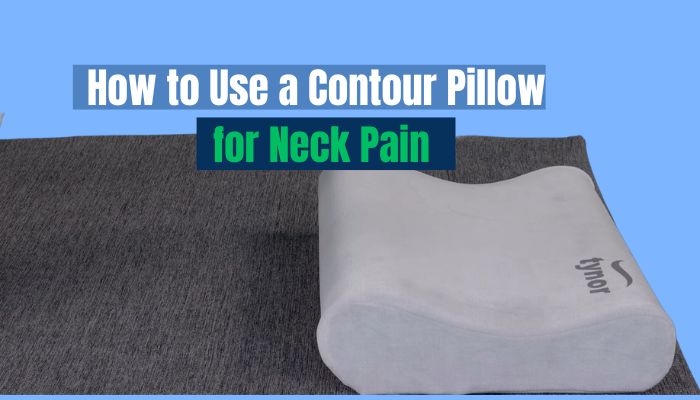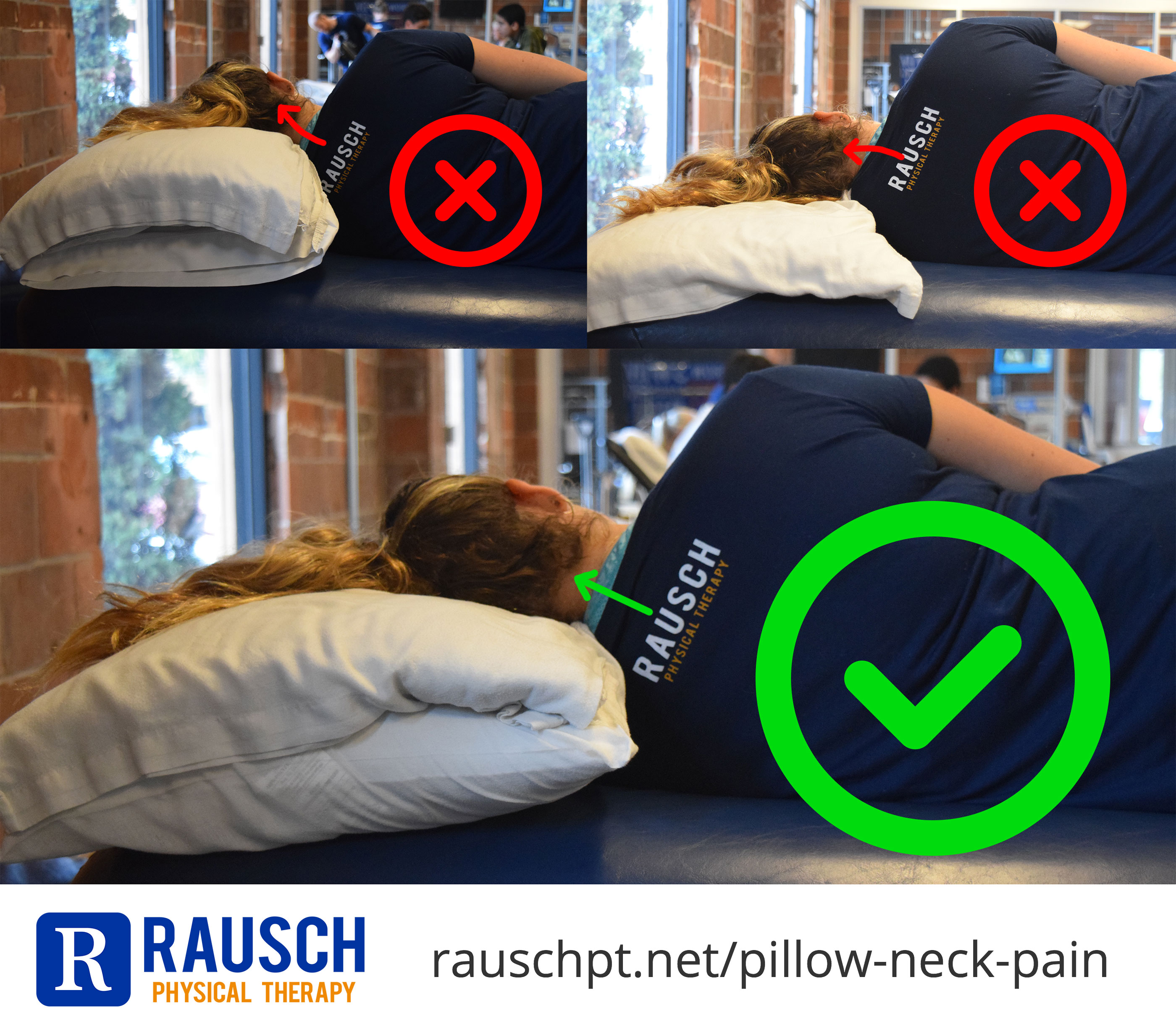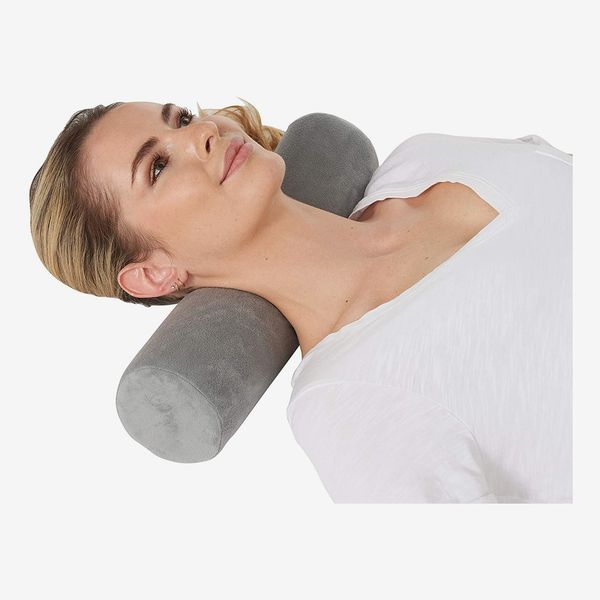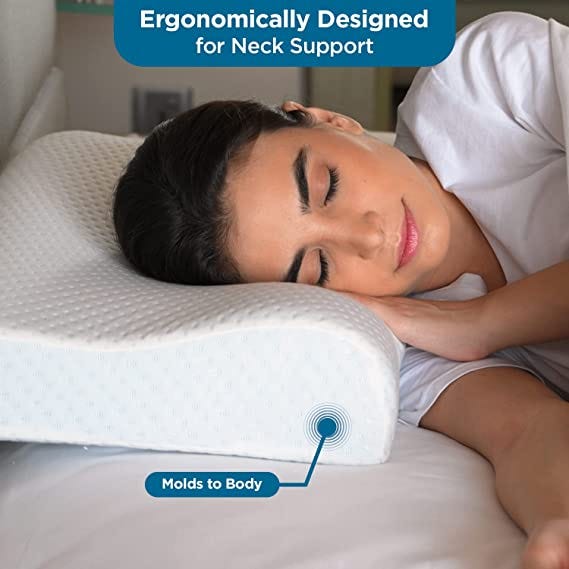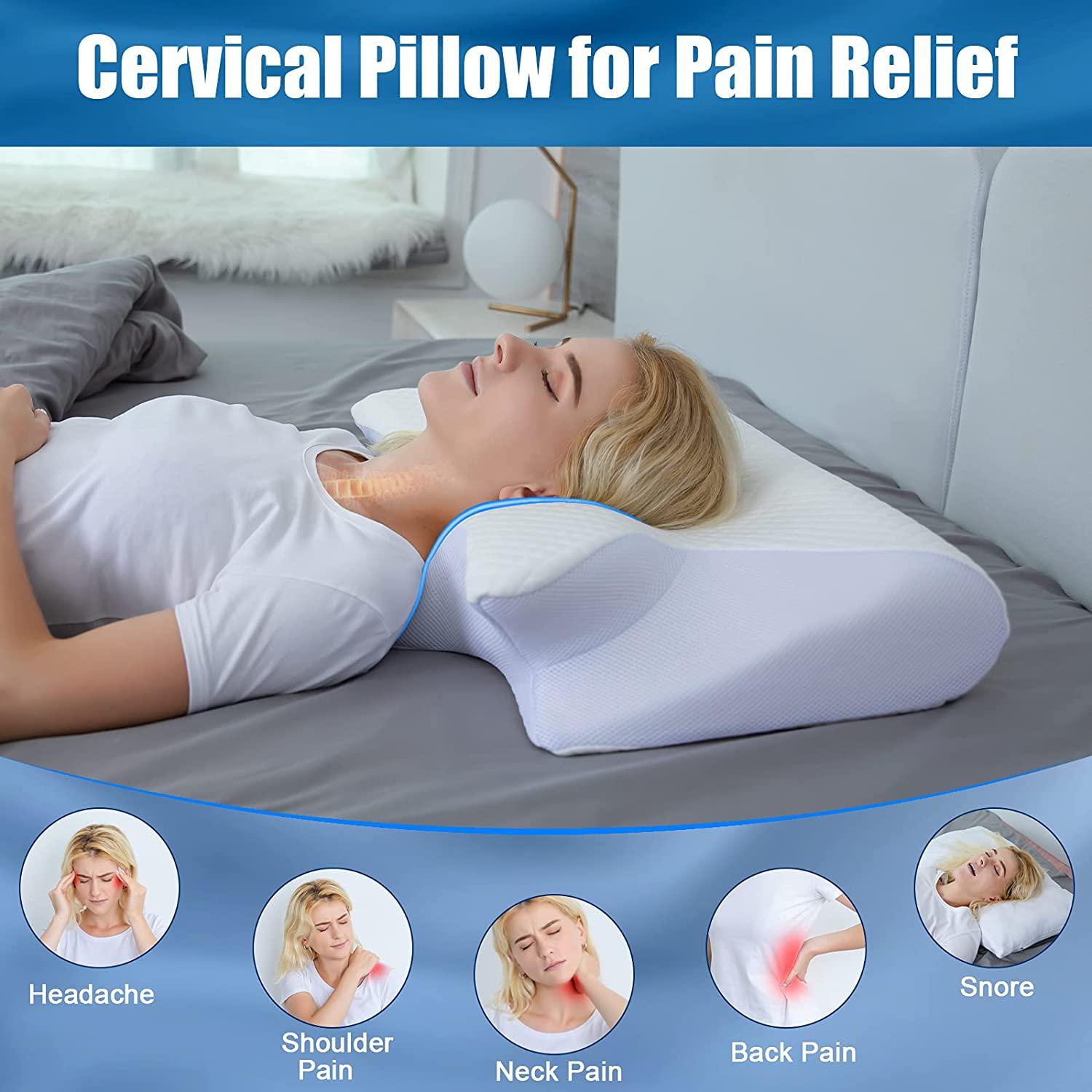How To Use Pillow For Neck Pain

Imagine waking up, the sun gently warming your face, but instead of feeling refreshed, a sharp, throbbing pain shoots through your neck. You try to stretch, to massage the knotted muscles, but the discomfort lingers, casting a shadow over your entire day. This scenario is all too familiar for millions, a daily struggle with neck pain that impacts everything from work productivity to the simple joy of turning your head.
This article delves into a seemingly simple yet profoundly effective tool for managing neck pain: the humble pillow. We'll explore how choosing the right pillow and using it correctly can make a world of difference, offering relief and promoting better sleep. Understanding the nuances of pillow selection and proper sleep posture is key to unlocking a pain-free morning and a more comfortable life.
The Foundation: Understanding Neck Pain and Its Causes
Neck pain is a widespread issue, often stemming from poor posture, muscle strain, arthritis, or even something as simple as sleeping in an awkward position. The cervical spine, or the neck region of the spine, is particularly vulnerable due to its flexibility and the weight it supports – your head. When the neck isn't properly supported during sleep, muscles and ligaments can become strained, leading to stiffness and pain.
According to the American Academy of Orthopaedic Surgeons, maintaining proper spinal alignment is crucial for preventing and managing neck pain. This alignment ensures that the weight of your head is evenly distributed, reducing stress on the neck muscles and joints. Ignoring this can lead to chronic discomfort and even exacerbate existing conditions like cervical spondylosis.
Pillow Talk: Choosing the Right Support
Selecting the right pillow is not a one-size-fits-all endeavor. Factors such as your preferred sleeping position, body size, and any pre-existing conditions should all be considered. The goal is to find a pillow that supports the natural curve of your neck, keeping your head, neck, and spine in alignment.
Side Sleepers: A Firmer Foundation
Side sleepers generally require a firmer, thicker pillow to fill the gap between their ear and shoulder. This helps maintain a neutral spinal alignment. Look for pillows that are specifically designed for side sleepers or those with a higher loft (thickness). Memory foam or latex pillows are often good choices, as they provide excellent support and contouring.
Consider a contoured pillow that has a raised edge to support the neck. This design helps to prevent the neck from tilting down towards the mattress. Be sure the pillow is thick enough to fill the space, but not so thick that it pushes your head upwards and out of alignment.
Back Sleepers: Gentle Support and Contour
Back sleepers need a pillow that supports the natural curve of their neck without pushing their head too far forward. A thinner pillow with a gentle contour is often ideal. Memory foam or water pillows can be good options, as they conform to the shape of your head and neck.
A pillow with a center depression or cervical roll can provide additional support for the neck. Avoid pillows that are too thick or fluffy, as these can force your head forward, straining your neck muscles. The aim is to maintain a natural, comfortable alignment.
Stomach Sleepers: The Toughest Position
Sleeping on your stomach is generally discouraged, as it places significant strain on the neck and back. If you must sleep on your stomach, use the thinnest pillow possible, or even no pillow at all. This minimizes the extension of the neck.
Consider placing a pillow under your stomach or hips to help maintain spinal alignment. Ultimately, the best solution for stomach sleepers is to gradually transition to sleeping on their side or back. This may take time and effort, but it can significantly reduce neck pain.
Material Matters: Exploring Pillow Options
Beyond shape and size, the material of your pillow plays a significant role in its comfort and support. Common pillow materials include memory foam, latex, down, feathers, and polyester fill. Each material has its own unique properties and benefits.
Memory Foam: Contouring Comfort
Memory foam pillows conform to the shape of your head and neck, providing excellent support and pressure relief. They are particularly well-suited for side and back sleepers. Look for memory foam pillows that are certified by reputable organizations, such as CertiPUR-US, to ensure they are free from harmful chemicals.
Some memory foam pillows are infused with cooling gel to help regulate temperature and prevent overheating. This can be a beneficial feature for those who tend to sleep hot. Shredded memory foam pillows offer a more adjustable feel, allowing you to customize the loft and firmness to your liking.
Latex: Natural and Supportive
Latex pillows offer a similar level of support and contouring as memory foam, but they are made from natural rubber. This makes them a more environmentally friendly option. Latex pillows are also naturally hypoallergenic and resistant to dust mites.
They tend to be more breathable than memory foam, which can help to regulate temperature. Both natural and synthetic latex options are available, each with slightly different properties. Natural latex tends to be more durable and resilient.
Down and Feathers: Softness and Luxury
Down and feather pillows are known for their softness and luxurious feel. However, they may not provide enough support for those with neck pain. These pillows tend to compress over time, losing their loft and support.
If you prefer the feel of down or feathers, consider using a pillow with a firmer core to provide better neck support. Regularly fluffing and rotating the pillow can help to maintain its loft. Be aware that some people may be allergic to down or feathers.
Polyester Fill: Affordable and Accessible
Polyester fill pillows are the most affordable and widely available option. However, they often lack the support and durability of other materials. Polyester pillows tend to flatten out quickly and may not provide adequate neck support for long-term use.
If you choose a polyester fill pillow, be sure to replace it regularly to ensure it continues to provide adequate support. These pillows are a good option for temporary use or for those on a tight budget.
Beyond the Pillow: Optimizing Your Sleep Environment
While the right pillow is crucial, it's just one piece of the puzzle. Creating an optimal sleep environment can further enhance your comfort and reduce neck pain. This includes factors such as your mattress, sleep position, and overall sleep hygiene.
Mattress Matters: A Supportive Foundation
Your mattress should provide adequate support for your spine, allowing you to maintain a neutral alignment during sleep. A mattress that is too soft or too firm can contribute to neck and back pain. Consider your sleeping position when choosing a mattress. Side sleepers often benefit from a softer mattress that allows their shoulders to sink in, while back sleepers may prefer a firmer mattress that provides more support for their spine.
Sleep Position: Finding Your Comfort Zone
As mentioned earlier, your sleep position can significantly impact neck pain. Experiment with different positions to find what works best for you. Using additional pillows to support your body can also help maintain proper alignment. A pillow between your knees can help align your hips and lower back if you are a side sleeper.
Sleep Hygiene: Creating a Restful Routine
Establishing a consistent sleep routine can improve the quality of your sleep and reduce pain. This includes going to bed and waking up at the same time each day, even on weekends. Create a relaxing bedtime routine that helps you unwind before sleep, such as taking a warm bath, reading a book, or listening to calming music.
Avoid caffeine and alcohol before bed, as these can interfere with sleep. Make sure your bedroom is dark, quiet, and cool to promote restful sleep. Consider using a white noise machine or earplugs to block out distracting sounds.
Seeking Professional Help
If your neck pain persists despite trying these strategies, it's important to seek professional help. A doctor, physical therapist, or chiropractor can evaluate your condition and recommend appropriate treatment options. These options may include medication, physical therapy exercises, or other therapies.
Don't hesitate to seek medical advice if your neck pain is accompanied by other symptoms, such as numbness, tingling, or weakness in your arms or hands. These symptoms may indicate a more serious underlying condition. Early diagnosis and treatment can help prevent chronic pain and improve your quality of life.
A Final Thought: Prioritizing Comfort and Wellness
The journey to finding the perfect pillow and optimal sleep posture may take some experimentation, but the rewards are well worth the effort. By prioritizing your comfort and spinal alignment, you can significantly reduce neck pain and improve your overall well-being. Remember, a good night's sleep is an investment in your health.
Take the time to find the right pillow, create a supportive sleep environment, and establish healthy sleep habits. Your neck – and your entire body – will thank you for it. Sweet dreams and pain-free mornings await.


